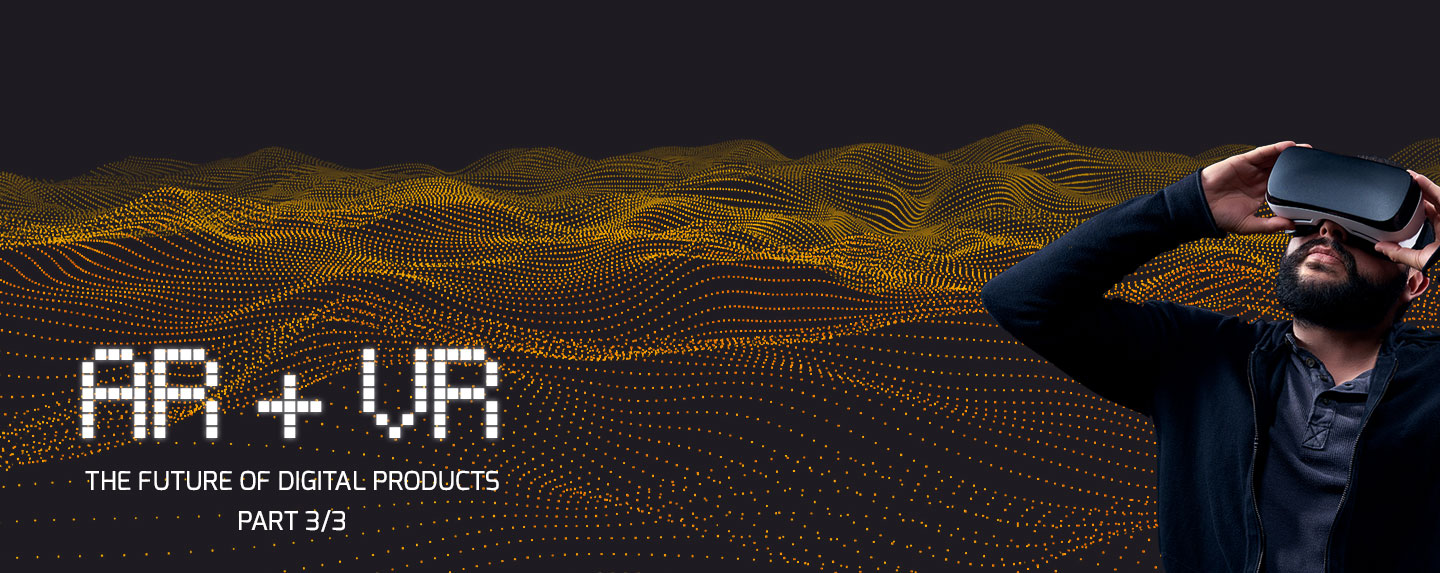Part 3 -- Thinking ahead for our clients with virtual and augmented reality

JC: We’re raising a generation of kids already addicted to screens. How much danger do you think we’re in of replacing vital human interactions with virtual ones? Are flesh-and-blood humans in danger of obsolescence?
EK: This is a recurring fear expressed in science fiction: if there’s a virtual world that’s better than the real world, will everyone stay in there all the time and abandon reality? The Matrix presents this as a dystopia; the novels Snow Crash and Ready Player One make it seem sort of appealing. Anyone with videogame addiction issues should definitely be wary of VR tech, but I think most people will continue to prefer real things in the real world, most of the time. What we’ll probably see instead is a blurring between reality and computer interfaces, and we’ll gradually get used to having our data and UI bleeding into the world around us – just as we all currently keep one eye on our smartphones at all times -- rather than replacing the real world entirely. That said, if you want a hilarious and terrifying vision of AR taken too far, see the short video Hyper-Reality (2016).
JC: Do you foresee VR in education taking hold in any significant way?
EK: Education is a natural application for VR, since you can fully immerse people in different places and times. Google already has an app called Expeditions that lets a teacher guide an entire classroom through a synchronized VR experience using low-cost Cardboard headsets. You can also use Google Earth VR to zoom into any location in the world, and walk through mountain ranges and cities, with skyscrapers up to your knees – you can imagine a lot more educational apps beyond these early concepts.
However, VR equipment currently ships with warnings about exposing children for long periods of time, because we don’t know enough about the side effects. You’re tricking some parts of the brain’s visual processing system, but not other parts, and feeding this non-real input into a developing brain for hours per day might not be a good idea. For that reason, we’re probably not close to the vision of the film Ready Player One, in which kids attend school entirely in VR.
JC: What are the incremental steps for companies interested to incorporate VR or AR into their digital experiences? Is it as simple as a pair of 3-D glasses and a plug-in pointer?
EK: AR is the easiest to incorporate today, since the technology is being widely distributed to iPhones with iOS 11, and increasingly to Android phones as well. The secret of AR is that it’s also relatively cheap to produce, since most of the experience is provided by the actual world, and you only need to build out the graphics for the “augmented” parts – think about how Niantic’s Pokemon Go introduced a popular game at the scale of the entire Earth, simply by adding Pokemon graphics as an overlay to real-world locations.
With VR, there are some obvious marketing applications today, such as showing customers what it would be like to sit in various car models with different options; IKEA already has a VR app where you can explore their kitchen setups. But at this point, potential customers mostly won’t have the headsets in their homes. That makes VR more appropriate for tradeshows, dealerships, or internal corporate training, where it makes sense to provide the equipment on location. And of course the development cost of VR will tend to be higher than AR, since you need to produce a fully immersive experience, with your users’ expectations already set by the high-fidelity 3D graphics of console games. In the best case, you can repurpose 3D assets you already have, such as CAD files of your equipment; in the worst case, you’ll need to build everything, using specialized game-design tools like Unity. For that reason, VR production will generally be done by specialized agencies, much like the early days of mobile apps. So let me turn it back on you, John—what have you been thinking about how to expand AR and VR offerings to our Marker Seven clients?
JC: Great question, Evan. One place we’re seeing a kind of AR is in purchasing retail products online. Since the Internet, retailers have been jumping over each other trying to find ways to reproduce the hands-on experience of the brick-and-mortar store. One great example is Flutter Eyewear, which produces high-end fashion reading glasses, featured in Oprah magazine. With a form of AR, their customers can “try on” glasses online, to see which ones will look best on them. This helps to increase the customer’s level on confidence in buying a product online that they had previously only bought in-store.